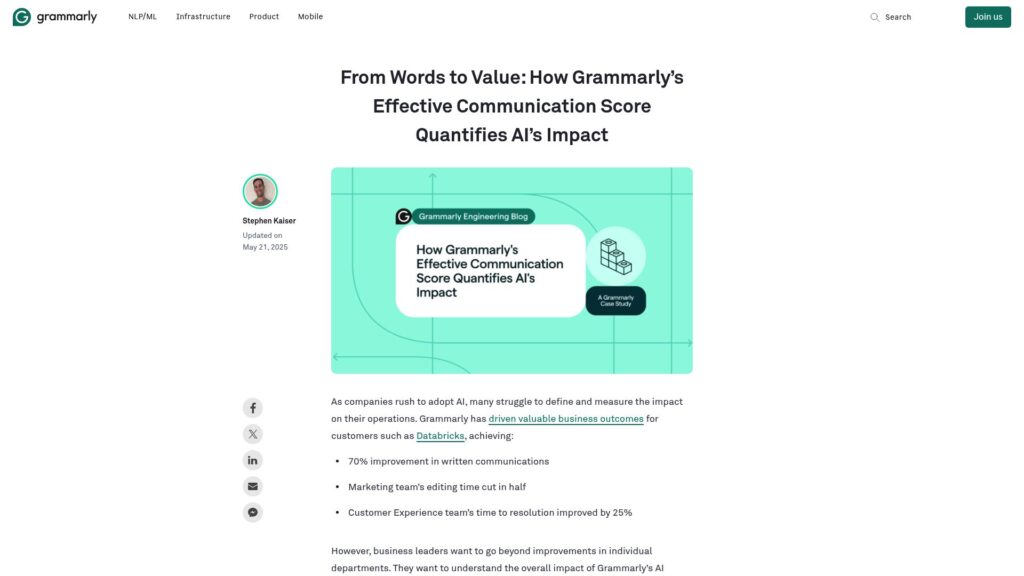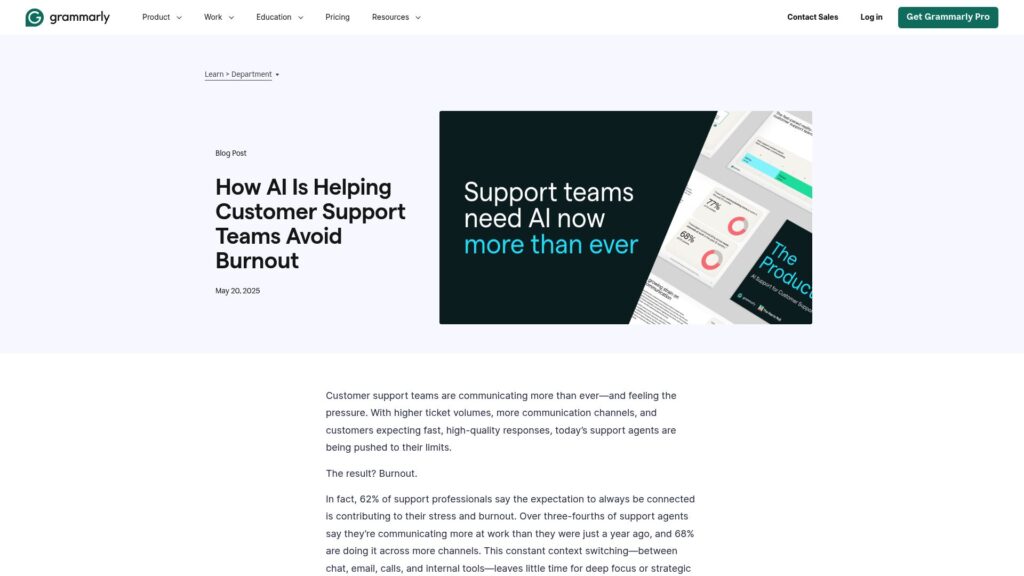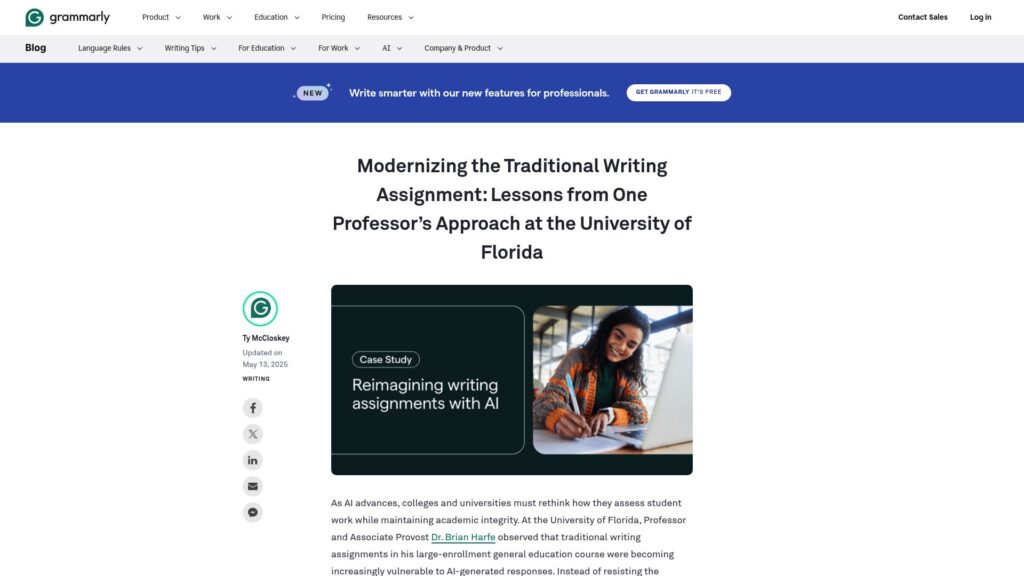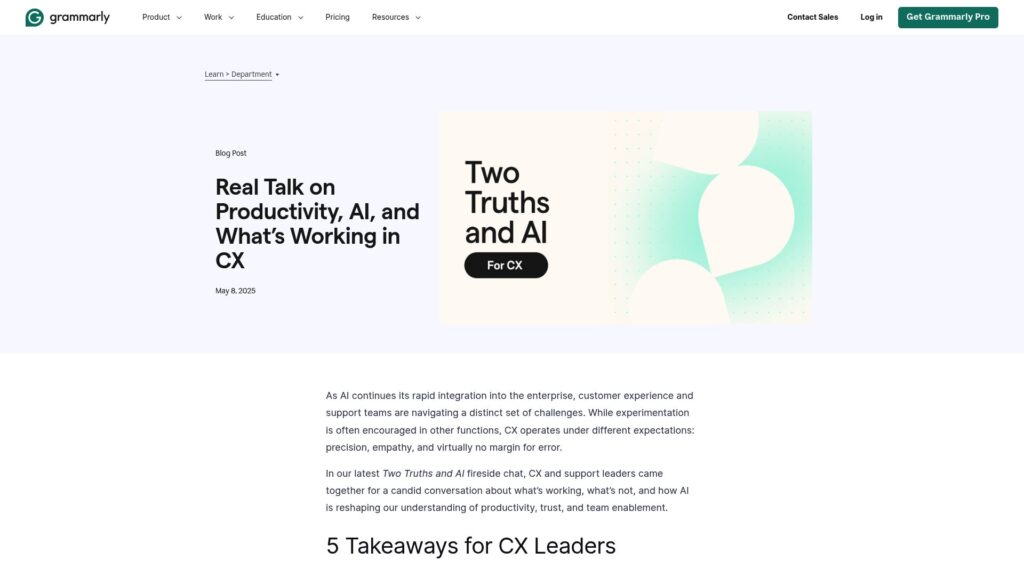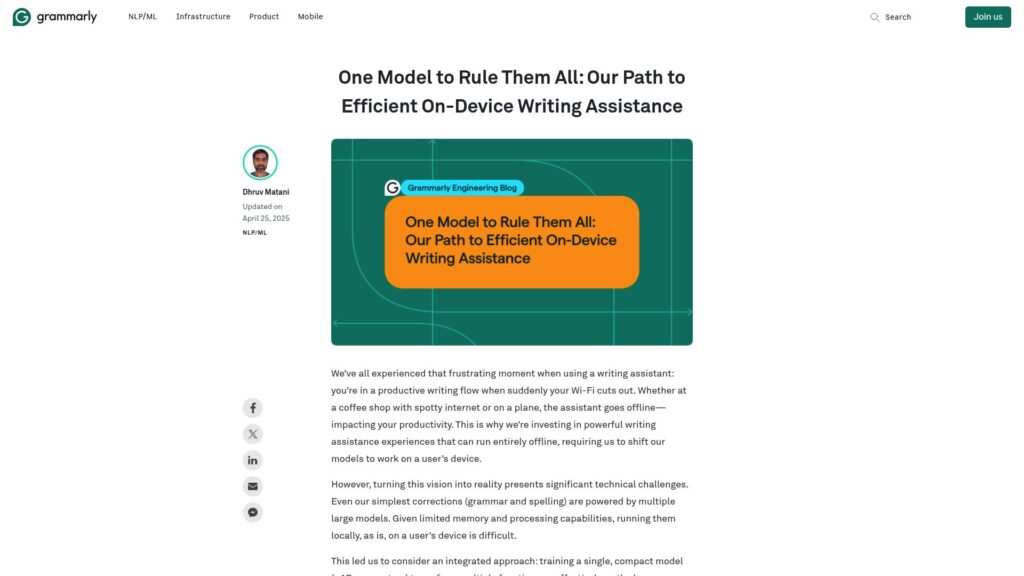From Words to Value: How Grammarly’s Effective Communication Score Quantifies AI’s Impact
Grammarly introduces the Effective Communication Score (ECS) to measure AI's impact on organizational communication. It aims to assess overall communication quality through metrics like correctness, clarity, and inclusivity. ECS provides real-time insights for Enterprise customers, helping them understand communication effectiveness compared to industry benchmarks. The scoring method gauges the number of unaddressed writing suggestions, reflecting communication quality. The initiative seeks to enhance insights on communication across platforms and prove Grammarly's ROI, helping organizations improve their writing and productivity.
https://www.grammarly.com/blog/engineering/effective-communication-score/

